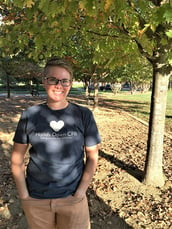Training Center Profiles
Meet Your Peers
Discover what your peers are thinking about the emergency care industry, the challenges their TCs face, and the solutions they’ve found in their quest to make their workplaces and communities safer.
 TC Name: Hands Down CPR TC Name: Hands Down CPR
Brand: MEDIC First Aid
Director: Kara Schoonveld
City, State: Sacramento, CA
Website: www.handsdowncpr.co
Type of Training Center: External (Training for individuals or organizations for a fee)
Business Structure: Sole proprietor
How long have you been in business?
1.5 years
What is the biggest challenge for you and your business?
Expenses and finding new customers
How do you market your business? (ranked in order of importance)
- Website
- Direct mail
- Email marketing
- Online advertising
What strategies or investments have proven to be a waste of time and money?
Mailers to local gyms/fitness centers
Based on what you know now, what advice would you have given yourself when you were starting out?
Take a marketing course early on
Where do you see your business and the emergency care training industry in the next 5-10 years?
Expanding training opportunities to increase effective bystander response to emergency situations
Of your business or training investments that cost less than $500, what has given you the best return?
Building my website
Where do you go to stay current with the latest industry information and knowledge?
HSI, AHA, & NAEMT
What are some of the most common misconceptions or mistakes you have seen/heard in your career?
That you'll get sued if you crack someone’s rib, and that a heart attack is the same as sudden cardiac arrest
Can you share a favorite Good Samaritan story about your students?
While in the grocery store, an adult male had his first-ever seizure. My student immediately ran to stabilize his head and instructed bystanders to call 911.
TC Name: Georgia Aquarium Academy
Brand: ASHI
Director: Terri Frazier
City, State: Atlanta, GA
Type of Training Center: Internal (Training for employees/members at no charge)
Business Structure: For-profit corporation
How long have you been in business?
13 years, with 9 years training staff and volunteers
Where do you see your business and the emergency care training industry in the next 5-10 years?
Starting to offer CPR and first aid the general public as a revenue source. Currently we only offer ASHI courses to staff and docents.
Based on what you know now, what advice would you have given yourself when you were starting out?
Have a designated spot for storage of equipment
What are some of the most common misconceptions or mistakes you have seen/heard in your career?
That CPR can be completed online without attending an in-person class
Of your business or training investments that cost less than $500, what has given you the best return?
Logo’d CPR pocket masks for all students to take with them. This is a great way to help them be prepared.
What strategies have proved to be a waste of time and money?
Offering too many courses that end up not having enough students
Where do you go to stay current with the latest industry information and knowledge?
Conferences
Is emergency care (or other workplace safety) training your primary job function at your organization?
Yes
What is the biggest training challenge at your company?
Budget and employee downtime
What has your company done to make safety part of the day-to-day culture?
Monthly safety meetings
Please share a success story about how you increased corporate leadership buy-in and support for your emergency care training efforts.
Offering training for staff and volunteers to help them aid our guests with emergency care should the need arise
What is the most difficult part of managing an internal Training Center?
Buy-in from management and working within a limited budget
Can you share a favorite Good Samaritan story about your students?
We had one student who, after completing a CPR course, was able to revive a sudden cardiac arrest victim.
We want to hear from you!
Share your wisdom with your TC peers by completing one of our 15-minute profile surveys.
If your TC provides training for individuals or organizations for a fee, click the "External TC" button. For those TCs that offer training for employees/members at no charge, choose "Internal TC."
 
|